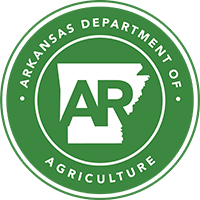Natural Resources
Efficiently and responsibly managing and protecting our water and land resources for the sustainability, health, safety, and economic benefit of the State of Arkansas
Agriculture / Natural Resources / Divisions / Water Management / Wetlands Mitigation Bank Program
Wetlands Mitigation Bank Program
What is the Arkansas Wetland Mitigation Bank Program?
The Arkansas Wetland Mitigation Bank Program is a state-sponsored initiative aimed at providing off-site mitigation opportunities to Section 404 permit recipients required to provide compensatory mitigation for impacts of approved wetland projects. Arkansas statutes allow the state to acquire degraded wetlands and restore the wetland functions that previously occurred on the areas. This is accomplished by reestablishing the wetland hydrology and vegetation.
What is Mitigation Banking?
Mitigation banking is the creation, restoration, enhancement, or in exceptional circumstances, preservation of wetlands for the express purpose of providing compensating for unavoidable wetland losses in advance of development actions, when such compensation cannot be achieved at the development site or would not be as environmentally beneficial.
Who can use the Arkansas Wetland Mitigation Bank?
Individuals required to provide compensatory mitigation as a requirement of a Section 404 permit are eligible to use the mitigation bank if its use is approved by the permitting agency, and the impact site is within the bank site's geographic service area (i.e., the area wherein a bank would provide appropriate compensation for impacts to wetlands). The Geographic Service Area is recommended by the Interagency Review Team on a per site basis, with final determination made by the District US Army Corps of Engineers office where the Bank Site is located. Consideration may be given to allowing mitigation at a bank site adjacent to the planning region of the impact site, but higher credit ratios would be required.
Who administers the Arkansas Wetland Mitigation Bank Program?
The Arkansas Wetlands Mitigation Bank is administered by the Arkansas Natural Resources Commission. The Director of ANRC, in consultation with the Wetland Technical Advisory Committee, has the authority to: set sales price and sell credits, acquire and accept title for approved mitigation sites from willing sellers, and conduct other activities necessary to administer the mitigation bank program.
How are Mitigation Bank Sites Selected?
The location of mitigation bank sites are based on consideration of areas ability to offer potential wetland functions and values most needed for compensatory mitigation, the potential to link corridors or small areas into larger ones, areas that offer the most feasible conditions for successful establishment of a viable wetland, areas that will incorporate land adjacent to or near other public lands, and State-wide wetlands plans or strategies.
After the area for a wetlands bank has been selected, individual sites are evaluated according to criteria developed by the Wetlands Technical Advisory Committee, including:
- Historical wetland trends, included estimated rate of wetlands loss of the respective wetland types
- Current and potential contributions to wildlife, fisheries, ground-water quality, diversity, etc.
- Location of sites in relation to permit actions where mitigation might be useful, probability of success, etc.
- Economic impact of establishing the site
- Costs of land acquisition, establishment and maintenance, and cost effectiveness of each site based on percentage of land in prior converted wetlands to be restored, existing wetlands, etc.
- Requirements of permitting agencies
What are Mitigation Banking Credits and Debits, and How Are They Determined?
Credits and debits essentially represent "currency" or units of trade. Credits represent the accrual or attainment of wetland functions at the bank site resulting from the restoration being done, while debits represent the loss of functions at the project site.
The Corps of Engineers, in conjunction with the Interagency Review Team, determine the number of credits available at a bank site based potential for restoring or enhancing the wetland functions as compared with existing conditions. The potential for restoring wetland functions is determined by applying an appropriate functional assessment technique, such as the Hydrogeomorphic Wetland Assessment Method.
What are the Advantages of Mitigation Banking?
Mitigation banking can have several advantages over traditional compensatory mitigation. Mitigation banks can consolidate many small scattered compensatory mitigation sites into one larger site that may be more advantageous for maintaining the integrity of the aquatic ecosystem. Mitigation banks bring together financial resources, planning and scientific expertise not practicable to many small compensatory mitigation projects, thus increasing the probability of success. Typically, mitigation banks are functioning at some level prior to project impacts, thereby reducing temporal losses of aquatic functions. Consolidation of compensatory of mitigation within a bank increases the efficiency of limited agency resources needed to review and monitor mitigation projects for compliance.
For more information contact:
Tate Wentz, Water Quality Section Manager
Arkansas Department of Agriculture
Natural Resources Division
10421 W. Markham Street
Little Rock, Arkansas 72205
Phone: (501) 682-3914 Fax: (501) 682-3991
Email: tate.wentz@agriculture.arkansas.gov

